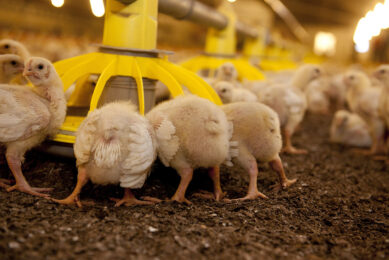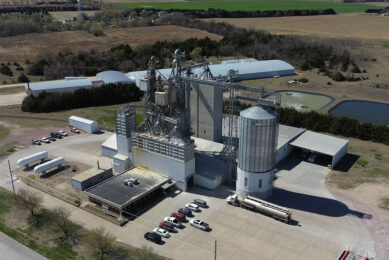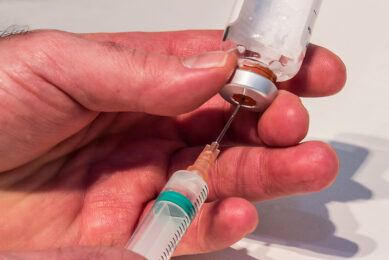Succeed in the evolution to a post antibiotic era
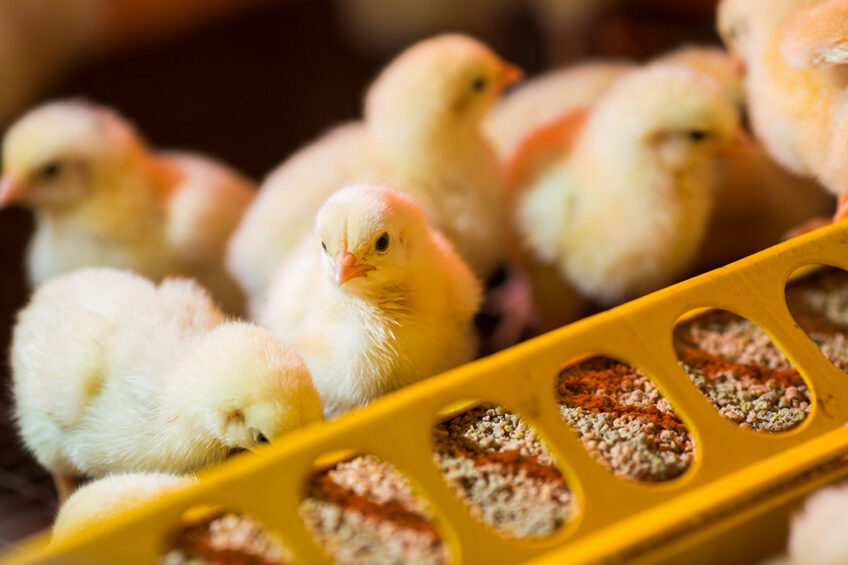
To ensure a successful evolution to an era with less antibiotic, experts emphasise on the need for a transition to more sustainable farming facilities. As such, policies on antibiotic reduction, need to be combined with guidelines on how to improve animal husbandry and health.
ANTIBIOTIC REDUCTION SPECIAL 2023 – read all articles
It is becoming more and more clearer that animal health and performance are closely linked to gut health. In addition to being the primary organ for feed digestibility and nutrient absorption, the gut also functions as barrier protecting the animal from pathogens and their toxins. This barrier includes a physical part existing out of a mucus layer produced by underlying goblet cells that are embedded within epithelial cells. These epithelial cells are themselves closely connected to each other by tight junctions that prevent the passage of unwanted substances through the space in between adjacent cells. Next to this physical barrier, also chemical substances, existing out of digestive secretions and components of the innate and adaptive immune system take part in the barrier function. Further the lumen of the digestive tract is colonised by the microbiota, who modulates the intestinal barrier and contributes to the intestinal health together with the gut barrier.In poultry production, the birds can face several challenges over a short period of time, from vaccination to dietary changes. Any such stress can have a negative impact on intestinal health, resulting in a potential infection and reduced performance. To safeguard the genetic growth potentials of the birds, good management and husbandry practices can be combined with the supplementation of dietary solutions promoting growth and gut health.
One of those solutions is the yeast postbiotic, Safmannan, obtained from autolysis of a proprietary Saccharomyces cerevisiae strain and characterised by a high batch-to-batch consistency with at least 20% α-mannans and 20% β-glucans (1,3 and 1,6) to achieve repeatable performance in animals.
Promote beneficial microbiota and performance
Increasing feed prices and reduced availability of raw materials are forcing nutritionists to work on more alternative diet formulations which might change regularly in composition during the production period. Thus, significant production losses can be encountered. Fortunately, supplementation of these diets with the yeast postbiotic, Safmannan, have shown to improve the performance levels of the birds by reducing the harmful effects of nutritional challenges and dietary stress. After 3 weeks on a variable diet, the birds supplemented with the yeast postbiotic demonstrated significantly superior growth (864 g) compared to the birds on the control diet (760 g) (p<0.05). This study demonstrated that Safmannan can compensate for deficiencies in feed quality and reduce the harmful effects of a nutritional challenge (Figure 1).
Figure 1 – Body weight of broilers at 3 weeks (g).
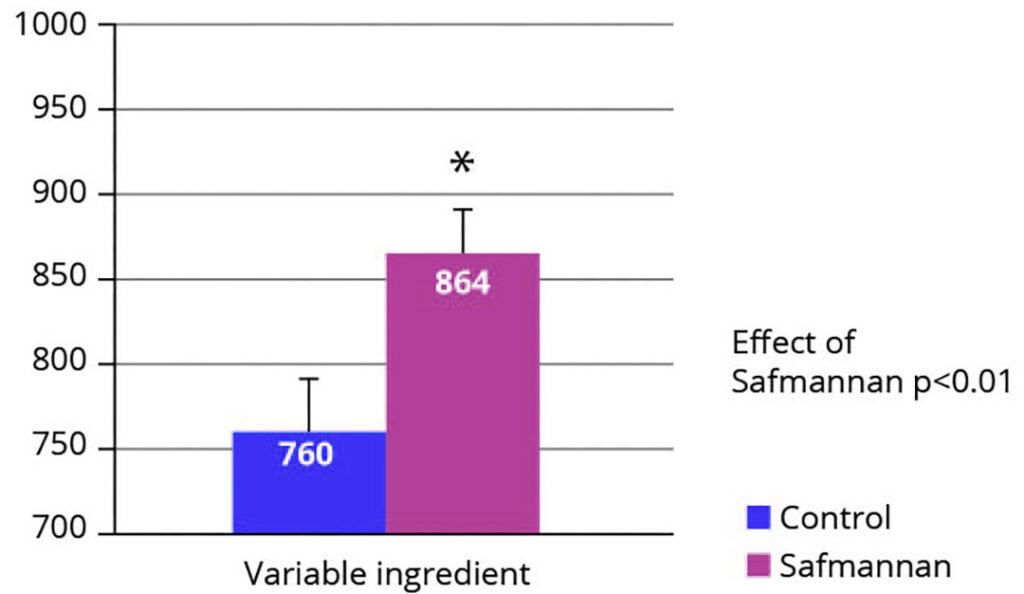
Additionally, the supplementation of low-quality diets with the yeast postbiotic has shown to improve the intestinal immunity of nutritionally challenged birds. This was demonstrated in another trial by a tendency of the postbiotic to increase IL-6 expression (P=0.08) and lymphocyte infiltration (P=0.054) at day 3 of age. In contrast, lymphocyte infiltrations and inflammatory lesion scores were significantly reduced (P=0.036) in the supplemented group at day 21 of age, indicating a fast recovery of the supplemented birds from stress.
Furthermore, research has demonstrated that administration of the yeast postbiotic can modulate the intestinal microbiota composition to one exhibiting higher diversity.
Significant increases in beneficial genus such as Roseburia, Ruminococcus torques, Eubacterium Hallii and Shuttleworthia were observed in one trial, while the Enterobacteriaceae colonisation was decreased in the supplemented group compared to the control group.
As an inhabitant of the healthy animal intestine, Ruminococcus torques probably increased its prevalence in the supplemented animals due to its capacity to convert/metabolise complex polysaccharides into nutrients that are beneficial for the host. Additionally, species belonging to the genus Eubacterium hallii and Roseburia are known to be able to interact with the acetate and lactate to produce butyric and propionic acid which have the capacity to strengthen the epithelial barrier function and positively impact the microbiota by reducing the pathogenic species.
Eliminate harmful pathogens
Next to promoting the beneficial microbiota, the postbiotic also helps to eliminate harmful bacteria. The latter probably attributed to the presence of the α-mannans who will adhere to type-1 fimbriae of pathogenic bacteria including Salmonella, making it more difficult for these pathogens to colonise the intestinal epithelium.
The effect of the postbiotic on reducing Salmonella was demonstrated in a Salmonella Typhimurium challenge model where administration of the yeast postbiotic enhanced the performance of the challenged birds after challenge (P=0.014), while decreasing the lesion score (P=0.0006) in the caecum and the Salmonella colonisation in caeca (P=0.001) on D28 of the trial. A reduced colonisation of Salmonella in the liver (P=0.038) also indicates that an increased intestinal health reduced the translocation of the pathogen to systemic organs (own unpublished data).
Additionally, the detection of higher geometric mean for flagellin IgA (P=0.0006) antibody titers in the Safmannan group compared to the unchallenged and challenged control groups on day 28, also shows the positive effect of the postbiotic on the intestinal immune system and health.
Arising health problems in intensively farmed chickens and production losses have stimulated the use of antibiotics as prophylactic routine treatment rather than metaphylactic medicine for sick animals only. However, the ban of prophylactic use of antibiotic in animals has already entered into force in EU. China has also forbidden incorporation of antibiotic in commercial animal feeds. This global change is undoubtedly an important challenge for all poultry producers, meanwhile it’s also the opportune moment to increase birds’ welfare by giving them more sustainable dietary solution like the yeast postbiotic. Gut health is key for the evolution to a post antibiotic era and Safmannan, with high level of mannans and β-glucans is demonstrated to be one of the powerful and necessary tools for a successful transition By increasing diversity of the microbiota, promoting the persistence of beneficial bacteria while creating an unfavourable environment for potential pathogens like Salmonella, the yeast postbiotic can help the birds to be more resilient, reach excellent production performance, with less and less antibiotics.
References are available on request.





